Our Team – Ice

My research examines indicators and impacts of climate change in the cryosphere as well as the consequences of a warming climate (both atmospheric and oceanic) on cryospheric systems. Current interests include environmental change detection of Arctic ice shelves, sea ice and lake ice using remote sensing and in situ observations. I also study the drift and deterioration of large icebergs, known as ice islands, which are considered a hazard to navigation and offshore infrastructure. My group is actively developing low-cost, open-source environmental monitoring equipment and working with northern communities to promote travel safety over ice and land.
Adjuncts, Fellows and Associates
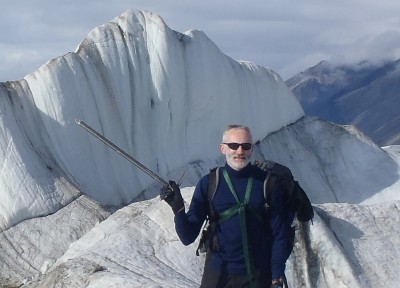
I have spent most of my career studying sea ice properties and processes, but also have a keen interest in the drift and deterioration of icebergs. I have worked on the development and verification of iceberg drift models, iceberg melt and calving processes, and the risk to offshore structures from icebergs and ice islands. Through my collaborations within WIRL these interests have expanded to include processes controlling the formation, melt, and break up of Arctic ice shelves, and the calving of tidewater glaciers. I also play a role in the supervision and mentoring of both graduate and undergraduate students.
Ph.D. Students
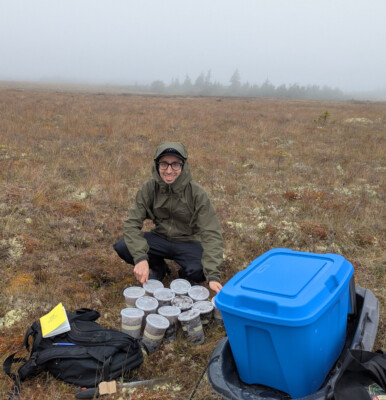
Nick PontonePhD Student
My research focuses on the remote sensing of boreal peatlands and the ecohydrological factors that influence wildfire susceptibility. I combine field measurements with optical, Synthetic Aperture Radar (SAR), multispectral, lidar, and UAV-based imagery to map and monitor the hydrologic status of Canadian peatlands. For my PhD thesis (supervised by Koreen Millard and Derek Mueller), I’m developing physics-based models that disentangle the combined effects of soil moisture, vegetation, and surface roughness on radar backscatter. I aim to use these models to detect early drought signals in peatlands which can be indicators of wildfire risk.
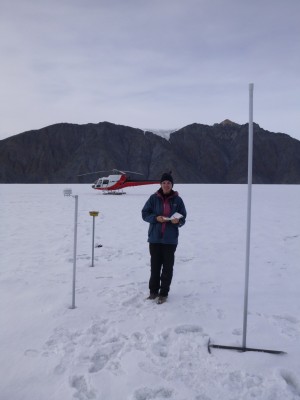
Yulia AntropovaPhD Student
I am a PhD student studying grounding line dynamics of the Milne Glacier, Nunavut. The line where glaciers transition from grounded to floating is particularly susceptible to changes associated with climatic warming occurring in the Arctic. Grounding line retreat is a good indicator of ice thickness reduction due to increased ice melt or dynamic thinning associated with enhanced ice discharge. I am using combination of spaceborne and in-situ observations of key variables related to the Milne Glacier. These observations will allow me to elucidate the processes occurring at the base of the glacier and relate them to the Milne Glacier thinning and recent ice discharge.
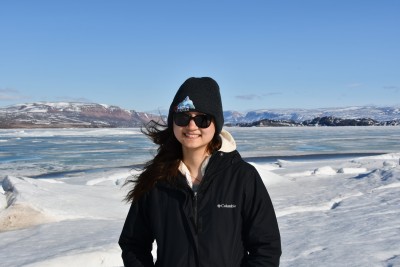
I am studying the physical processes that make landfast sea ice in Admiralty Inlet (Nunavut) susceptible to breaking up. During the spring break-up of sea ice, oceanic conditions can be highly variable, making travel over ice or on the water difficult and potentially dangerous. Melting of ice near the shore (shore leads), and cracks that form in the ice which span across the inlet are believed to be important precursors for break-up in Admiralty Inlet but can be difficult to monitor. I am interested in bringing together in-situ and satellite observations of sea ice and Inuit Knowledge to better understand these processes.
Masters Students
Owen KirkhamMSc Student
Anna BrownleeMSc Student
Undergraduate Students
Bella MouchetBSc Student
Collaborators
- Luke Copland, University of Ottawa
- Bernard Laval, University of British Columbia
- Alexander Forrest, University of California, Davis
- Christine Dow, University of Waterloo
- Warwick Vincent, Université Laval
- Doug MacAyeal, University of Chicago
- Peter Washam, Cornell University
- Phil Archambault, Université Laval
Former Lab Members
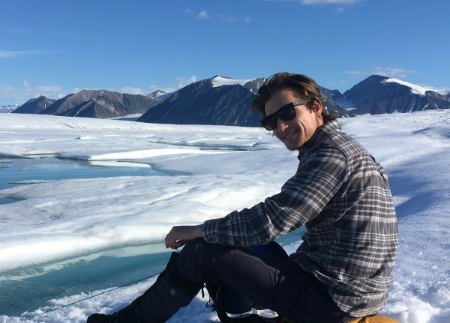
I studied the limnic and oceanographic side of Milne Fiord for my PhD. My research expertise is fluid mechanics; I use a combination of field observations, numerical modeling and theory to explore Milne Fiord system. I am interested in the impact of the ice structures (ice shelf, glacier, lake ice, sea ice) on the fjord’s circulation and mixing and on the impact of the circulation on these ice-structures. I was based at the University of British Columbia in Vancouver but co-supervised by Professor Mueller at Carleton. My dissertation is:
Bonneau, J. (2025). Physical oceanography of a Canadian Arctic glacial fjord : circulation, oceanic heat flux and interactions with cryospheric features. PhD Thesis, University of British Columbia. https://dx.doi.org/10.14288/1.0448488
Bonneau, J. (2025). Physical oceanography of a Canadian Arctic glacial fjord : circulation, oceanic heat flux and interactions with cryospheric features. PhD Thesis, University of British Columbia. https://dx.doi.org/10.14288/1.0448488
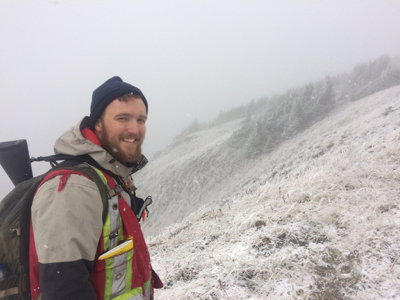
Erik WagenaarMasters Student
I studied the effect of a changing climate on snow and glacial meltwater production and runoff in catchments along the northern coast of Ellesmere Island, Nunavut. I used a hydrological model to examine the discharge of snow/ice melt into a layer of freshwater between the coast and the Milne Ice Shelf in Milne Fiord. The heat in these ‘epishelf lakes’ may be linked with the deterioration of the ice shelves over the past six decades. Insights into these hydrological processes can be applied at a regional scale, and contribute to a better understanding of the decline of coastal ice features in other fiords in the region.
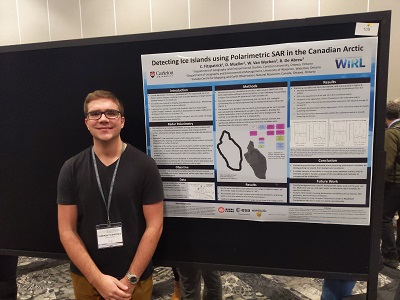
Cameron FitzpatrickUndergraduate Student
As an undergraduate student in Geomatics I aslo worked as student researcher. I used Synthetic Aperture Radar (SAR) Polarimetry to investigate the radar backscatter of ice islands. The goal was to find response variables that can aid in the detection and tracking of these large tabular icebergs in SAR data. I also was involved in Python programming projects and conducted field work on Ellesmere Island in 2022.
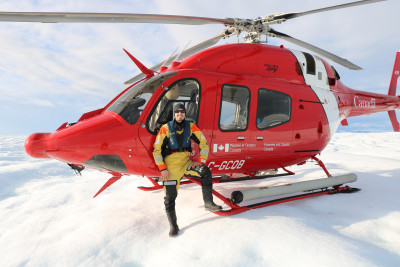
My Masters of Science in Geography was under the co-supervision of Dr. Luke Copland at the University of Ottawa and Dr. Derek Mueller at Carleton University. My research focused on the validation of the North American Ice Service (NAIS) iceberg drift and deterioration model, which is used to provide operational forecasts of iceberg hazards in Canadian waters. This research is in collaboration with the National Research Council of Canada (NRC) and the Canadian Ice Service (CIS). My thesis titled “Validation of the North American Ice Service Iceberg Drift Model” is available here.
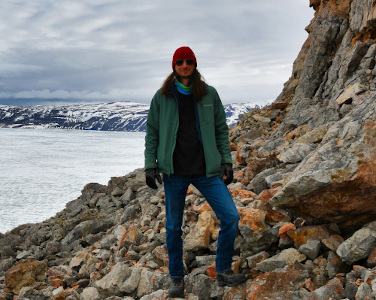
Calder PattersonMasters student
I was co-supervised by Dr. Adrienne Tivy at the Canadian Ice Service. I used statistical modelling methods to predict landfast sea ice breakout events at the northern floe edge of Admiralty Inlet in Nunavut. The northern floe edge of the inlet is important for the local tourism industry and traditional land-use practices. Unstable conditions during the spring melt season make it difficult for local sea ice users to navigate the northern floe edge safely. My thesis “A statistical analysis of landfast sea ice breakout events at the northern floe edge of Admiralty Inlet, Nunavut” is available here.

Ada LoewenMasters Student
I studied landfast sea ice break-up in Admiralty Inlet (Nunavut) using a finite element model and in-situ measurements of air temperatures, winds, ocean currents, and sea ice properties during the break-up season to examine the processes leading to the break-up of landfast ice in Admiralty Inlet.
2020 – Thesis: Landfast sea ice break-up processes in Admiralty Inlet, NU
2020 – Thesis: Landfast sea ice break-up processes in Admiralty Inlet, NU
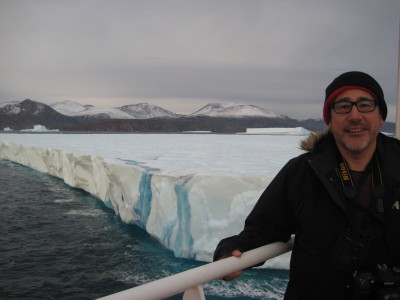
I have worked for many years on synthetic aperture radar applications and systems, and my primary training has been in systems design engineering. I am studying synthetic aperture radar backscatter from ice islands and icebergs, which includes not only surface scatter, but also Rayleigh scattering from small air bubbles within the low loss ice medium that is glacial ice. I am investigating possible propagation effects within the ice which may be linked to crystal fabric alignment. I am also interested in the problem of forecasting short term iceberg and ice island drift, especially in the presence of fine scale eddies that are difficult to predict using conventional ocean models. I believe in data driven modelling, and in using qualitative research to help formulate hypotheses we can then test quantitatively. My PhD thesis is building on my work under contract for the Canadian Ice Service [ Saper, Ron (2011) Preliminary Research Plan for Glacial Ice Hazards, Marine and Ice Services Division, Environment Canada, Ottawa].
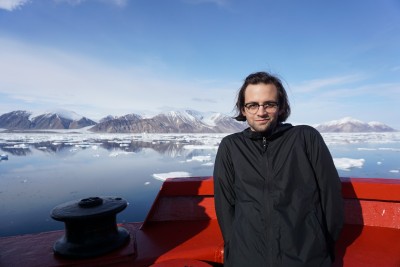
Jesse SmithMasters Student
I studied the deterioration of ice islands, which are very large tabular icebergs. Specifically, my thesis examined how large protrusions beneath the water surface called rams influence large-scale fracture events. Using a variety of remote sensing and in-situ data, I generated three-dimensional digital models of ice islands and used finite element analysis (FEA) to determine how they might fracture. The results were then compared to their actual morphology in post-fracture remote sensing imagery.
2020 – Thesis: Modelling ice island calving events with Finite Element Analysis
2020 – Thesis: Modelling ice island calving events with Finite Element Analysis
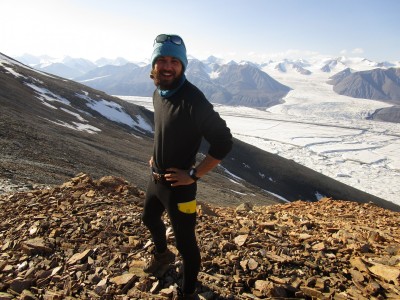
Peter WrayMasters Student
I was a Masters student at Waterloo supervised by Christine Dow and Derek Mueller (unofficially). My MSc thesis is on the Nansen Ice Shelf . I used ice penetrating radar data to examine the bottom morphology of the ice shelf. I was also on the field trip to Ellesmere Island in 2017.
2018 – Thesis: A Spatial Analysis of the Nansen Ice Shelf Basal Channel, Using Ice Penetrating Radar
2018 – Thesis: A Spatial Analysis of the Nansen Ice Shelf Basal Channel, Using Ice Penetrating Radar
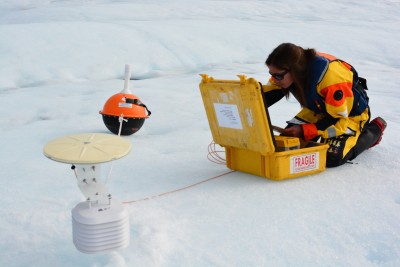
I studied the deterioration and spatial distribution patterns of ice islands. These exceptionally large ice features are hazardous to offshore industry in the Canadian Arctic and sub-Arctic regions. The use of remotely-sensed data is imperative for much of my research due to the difficulties associated with gaining field access to my study subjects. I utilized imagery acquired from space-borne sensors for my research and also visited ice islands to validate this acquired information. I also tested new aerial and ship-based surveying methods of detecting ice island deterioration in the field.
2018 – Thesis: Ice island deterioration
2018 – Thesis: Ice island deterioration
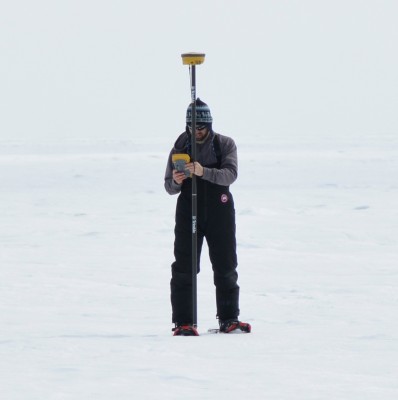
Martin St-AmantMasters Student
I am Combat Engineer within the Canadian Armed Forces (CAF), with the rank of Captain. I obtained a bachelor of Civil Engineering from the Royal Military College of Canada in 2007. I previously served as an Explosive Ordnance Disposal Team Leader during Op Athena, in Afghanistan, and I held engineering coordination responsibilities for CAF expeditionary missions at the CAF Canadian Joint Operations Command Headquarters. I completed a Physical Geography MSc at Carleton University on surveying sea-ice topography with from uninhabited aerial vehicles (UAV) using the Structure-from-Motion technique. I joined the CAF’s geomatics unit after graduation.
2018 – Thesis: Sea-ice topographic surveying using structure-from-motion photogrammetry conducted from small UAVs
2018 – Thesis: Sea-ice topographic surveying using structure-from-motion photogrammetry conducted from small UAVs

Luc DesjardinsResearch Associate
I am a retired forecaster from the Canadian Ice Service after 22 years of service and 32 years as a federal civil servant. I have expert knowledge with respect to iceberg and ice island historical trajectories along the Canadian Coast and exhaustive knowledge of sea ice interpretation using Synthetic Aperture Radar (SAR) and optical satellite imagery. I was drafted by Derek for the CI2D3 project where I digitized the numerous fragments of ice islands. I also provided training to students on ice interpretation when required.

Mahmud SazidyPostdoctoral Fellow
I have diverse experiences within mechanical and marine engineering fields. My areas of expertise are advanced numerical modelling, ice mechanics and Arctic/offshore design. Previous work includes sea ice characterization, development of a 3D iceberg deterioration tool, safe speed methodology of Polar ships, ship-ice interaction modelling, disconnection philosophy for SPAR platforms and iceberg impact analysis on GBS platforms. I have also investigated a broad range of Arctic offshore drilling activities including current and future drilling technologies, environmental challenges and regulatory issues. I developed an ice island deterioration model at WIRL. My long-term interest is to investigate the influence of different environmental and human factors in ice-class ship and offshore structure design.
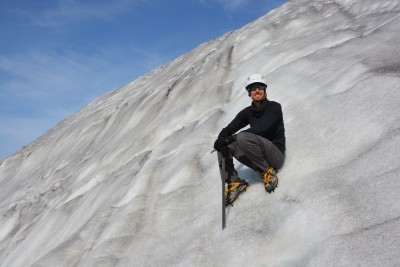
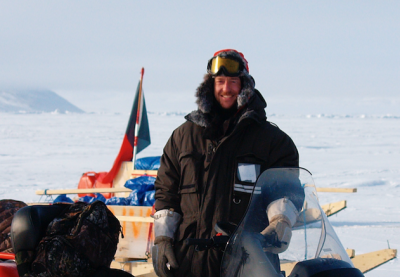
I am a polar oceanographer with research interests in ice-ocean interactions and glacial fjord dynamics. I am particularly interested in ocean circulation and exchange processes in the cavities below ice shelves, modification of meltwater runoff from glaciers and ice caps in fjords, and the coupling of the ocean-atmosphere-cryospheric system in a changing climate. The methods I use include targeted field experiments, analysis of observational data, and the development of simple analytical models to explain physical processes. I also have interest and experience in utilizing novel technologies for polar ocean data collection, including the deployment of autonomous underwater vehicles (AUVs) under ice in the Arctic and Antarctic.
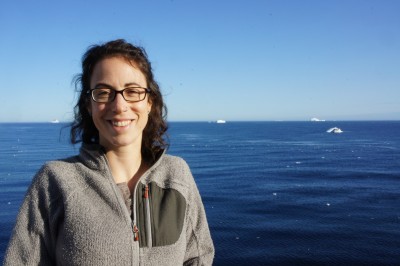
I studied sub-ice shelf hydrology on the Milne Ice Shelf, on the northern coast of Ellesmere Island, Nunavut. Sub-ice freshwater drainage is thought to be implicated in ice shelf stability; the Milne is the only remaining intact ice shelf in the Canadian Arctic and, so, the last chance to study an intact ice shelf system.
2017 – Thesis: Channelized Epishelf Lake Drainage Beneath the Milne Ice Shelf, Ellesmere Island, Nunavut
2017 – Thesis: Channelized Epishelf Lake Drainage Beneath the Milne Ice Shelf, Ellesmere Island, Nunavut
Andrew HamiltonPhD Student
2016 – Thesis: Ice-ocean interactions in Milne Fiord
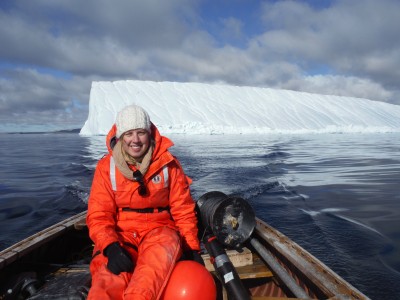
My M.Sc. research at Carleton University (co-supervised by Dr. Christine Michel) focused on large, tabular icebergs known as ice islands. Ice islands in the open ocean can be surrounded by relatively high biological activity due to an increased concentration of limiting nutrients in the photic zone of the water column. Ice island melt water can enhance the delivery of these nutrients in two ways: upwelling of marine deep waters adjacent to the ice island and/or nutrients sourced from the ice island itself. The objective of my research was to characterize the physical and biological oceanography of the water column surrounding a grounded ice island fragment. In particular, the potential for ice islands to alter the phytoplankton biomass in the surrounding water was considered. Fieldwork was conducted near Resolute Bay, Nunavut in August 2014.
2016 – Thesis: Characterization of the coastal marine environment in the vicinity of a grounded iceberg, Canadian Arctic Archipelago
Gregory Lewis-PaleyMasters Student
Miriam Richer-McCallumMasters Student
Anna CrawfordMasters Student
Adrienne WhiteMasters Student
2012 – Thesis: Dynamics and historical changes of the Petersen Ice Shelf and epishelf lake, Nunavut, Canada, since 1959 (Co-supervised by Dr. Luke Copland)
